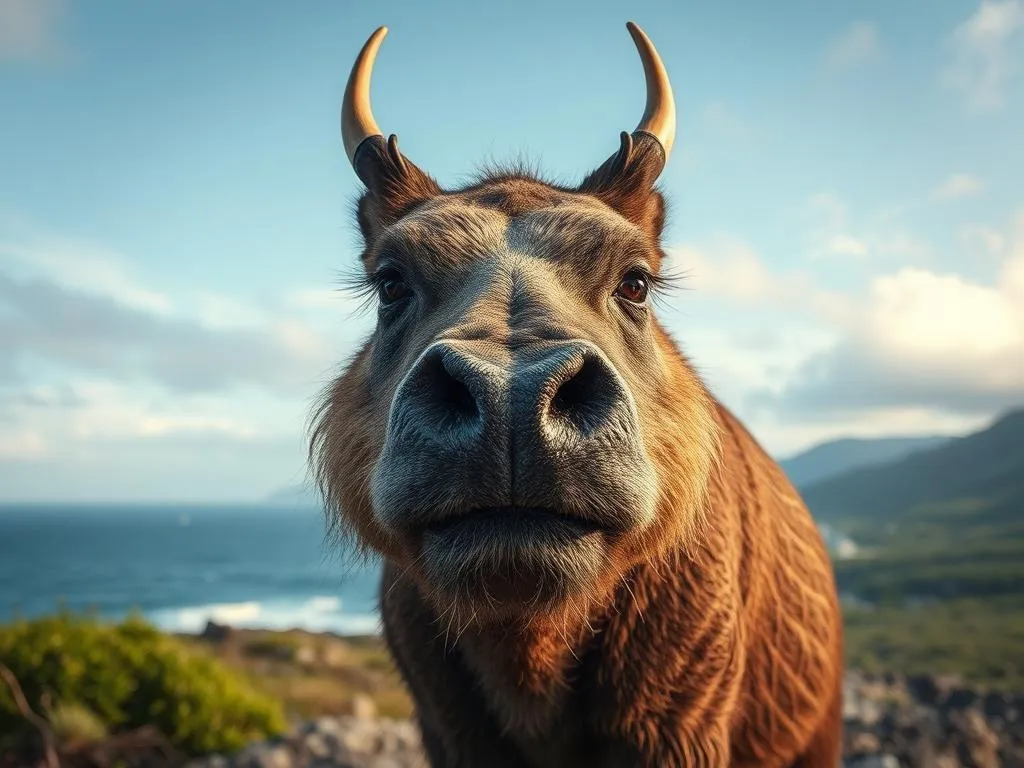
Introduction
Dog breeds play a significant role in our society, serving as companions, workers, and family members. Each breed has its own unique characteristics, which can greatly influence the choice of a pet. Among these breeds lies the Barbado da Terceira, a distinctive and fascinating breed that hails from the Azores archipelago. With a rich history and a unique set of traits, the Barbado da Terceira stands out as a remarkable choice for dog lovers.
The Barbado da Terceira is not just another breed; it is a testament to the deep-rooted traditions and agricultural practices of its native land. With its herding background and affectionate nature, this breed has carved out a special place in the hearts of many. In this article, we will explore the characteristics, care, training, and history of the Barbado da Terceira, alongside an understanding of dog breeds as a whole.
Understanding Dog Breeds
Definition of Dog Breeds
A dog breed is defined as a specific group of domestic dogs that share common ancestry, traits, and characteristics. Breeds are classified based on various factors such as size, coat type, temperament, and purpose. The classification of dog breeds is essential for understanding how to care for them and meeting their specific needs. For example, sporting breeds like retrievers require ample exercise, while toy breeds may thrive in smaller living spaces.
The Role of Dog Breeds in Human Society
Dog breeds have played diverse roles throughout history, from hunting and herding to companionship and service. Each breed brings unique attributes that can enhance human life, whether through loyalty, protection, or assistance. Understanding these traits is crucial for potential dog owners in selecting the right breed that aligns with their lifestyle and preferences.
The Barbado da Terceira
History and Origin
The Barbado da Terceira has its origins on Terceira Island in the Azores, an archipelago in Portugal. This breed was primarily developed for herding sheep and cattle, showcasing its strong work ethic and agility. The Barbado da Terceira has been an integral part of agricultural life on the island, helping farmers manage their livestock effectively.
Historically, the breed has also been used as a watchdog, displaying a natural protective instinct over its family and property. The Barbado da Terceira reflects the lifestyle and culture of the Azorean people, which adds to its unique historical significance.
Physical Characteristics
The Barbado da Terceira is a medium-sized dog, typically weighing between 35 to 65 pounds and standing about 18 to 23 inches tall at the shoulder. They possess a robust and muscular build, making them versatile workers on the farm.
Coat Type and Color Variations: The breed’s coat is thick, curly, and water-resistant, which is ideal for outdoor activities. The coat can come in a variety of colors, including black, brown, gray, and combinations such as brindle.
Distinctive Features: One of the defining features of the Barbado da Terceira is its ear shape, which can be either erect or semi-erect. Their tail is typically docked, which is a common practice among working breeds.
Temperament and Behavior
The Barbado da Terceira is known for its friendly and affectionate temperament. This breed is highly intelligent, making it relatively easy to train. They tend to be loyal and protective of their families, often forming strong bonds with their owners.
Interaction with other animals is generally positive, especially if the Barbado da Terceira has been socialized from an early age. However, they may exhibit herding behaviors, which can lead to chasing smaller animals if not properly trained.
Common Behavioral Issues: Like any breed, the Barbado da Terceira may face behavioral challenges, such as separation anxiety or excessive barking. Early socialization and training are essential in mitigating these issues. Consistent training methods, combined with positive reinforcement, can help shape the behavior of this beloved breed.
Care and Maintenance
Dietary Needs
Providing a well-balanced diet is crucial for the health of the Barbado da Terceira. A high-quality dog food that meets the nutritional needs of active dogs is recommended. Protein should be a primary ingredient in their diet, supporting their muscular build and energetic lifestyle.
Potential Health Issues Related to Diet: It’s important to monitor their weight, as obesity can lead to various health problems. Regular veterinary check-ups can help ensure that your dog remains in optimal health.
Exercise Requirements
The Barbado da Terceira is an active breed that requires regular exercise to stay healthy and happy. Daily walks, playtime, and mental stimulation activities are essential. Aim for at least 60 minutes of exercise each day, which may include:
- Long walks or runs
- Fetch and retrieval games
- Agility exercises or obstacle courses
Importance of Mental Stimulation: In addition to physical exercise, mental stimulation is vital. Puzzle toys, obedience training, and interactive games can help keep the Barbado da Terceira engaged and prevent boredom-related behaviors.
Grooming and Health Care
Grooming needs for the Barbado da Terceira are moderate. Their curly coat requires regular brushing to prevent matting and to control shedding. Bathing should be done as needed, typically every few months or when they become dirty.
Recommended Veterinary Care and Vaccinations: Regular veterinary visits are essential to monitor the health of your Barbado da Terceira. Vaccinations, flea and tick prevention, and routine health screenings should be part of your dog’s health care regimen.
Training the Barbado da Terceira
Basic Training Techniques
Training the Barbado da Terceira should begin as early as possible, focusing on socialization and basic commands. This breed is intelligent and eager to please, which makes training a rewarding experience.
Recommended Training Methods: Positive reinforcement is the most effective training method for the Barbado da Terceira. This can include treats, praise, or playtime as rewards for good behavior. Consistency is key; ensure that all family members use the same commands and training techniques to avoid confusion.
Advanced Training and Activities
For those looking to engage their Barbado da Terceira further, advanced training options are available. This breed excels in activities such as agility training, herding trials, and obedience competitions.
Benefits of Training: Engaging your dog in advanced training not only enhances their skills but also promotes mental and physical health, providing a structured outlet for their energy and intelligence.
Common Health Issues
Genetic Health Concerns
Like many breeds, the Barbado da Terceira can be prone to certain genetic health issues. Common hereditary conditions may include hip dysplasia and eye disorders. It’s essential to consult with reputable breeders who conduct health screenings and prioritize responsible breeding practices to minimize these risks.
Preventative Health Care
Routine health checks are crucial for maintaining the well-being of your Barbado da Terceira. Regular veterinary visits can help catch potential health issues early on. Additionally, maintaining a healthy lifestyle through a balanced diet, sufficient exercise, and preventive care will contribute to a long and healthy life for your dog.
Finding a Barbado da Terceira
Reputable Breeders
When searching for a Barbado da Terceira, it is vital to identify responsible breeders. Look for breeders who are knowledgeable about the breed and prioritize health testing. Ask questions regarding the lineage of the puppies and the health history of the parents.
Questions to Ask When Choosing a Breeder:
– What health tests have been performed on the parents?
– Can you provide references from previous puppy buyers?
– What socialization and training have the puppies received?
Adoption and Rescue Options
Adopting a Barbado da Terceira can be a fulfilling experience. Many breed-specific rescues and shelters may have dogs in need of homes. Adopting not only provides a loving environment for a dog in need but also contributes to reducing the number of homeless pets.
Benefits of Adopting vs. Buying from a Breeder: Adoption can often be more cost-effective, and it gives you the opportunity to provide a second chance to a dog in need. Additionally, adopted dogs are typically already spayed or neutered and may have received initial vaccinations.
Conclusion
The Barbado da Terceira is a remarkable breed that combines intelligence, loyalty, and a strong work ethic. With its rich history and unique characteristics, this breed offers a wonderful companionship for those who appreciate its agricultural roots and affectionate nature.
For potential dog owners considering the Barbado da Terceira, understanding its needs and traits is essential for a successful and fulfilling relationship. As with any breed, responsible pet ownership is paramount to ensuring a happy and healthy life for your furry friend.









